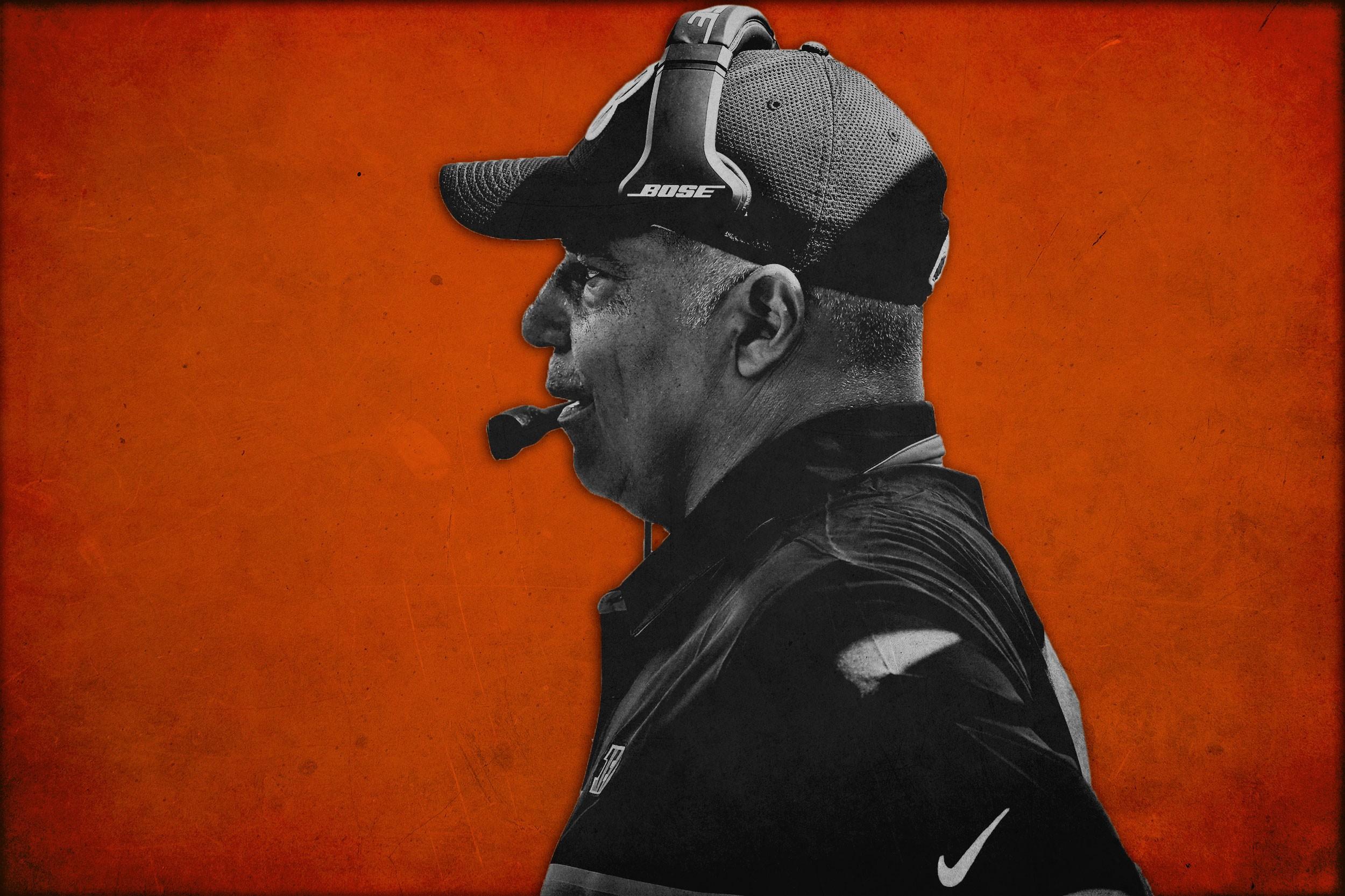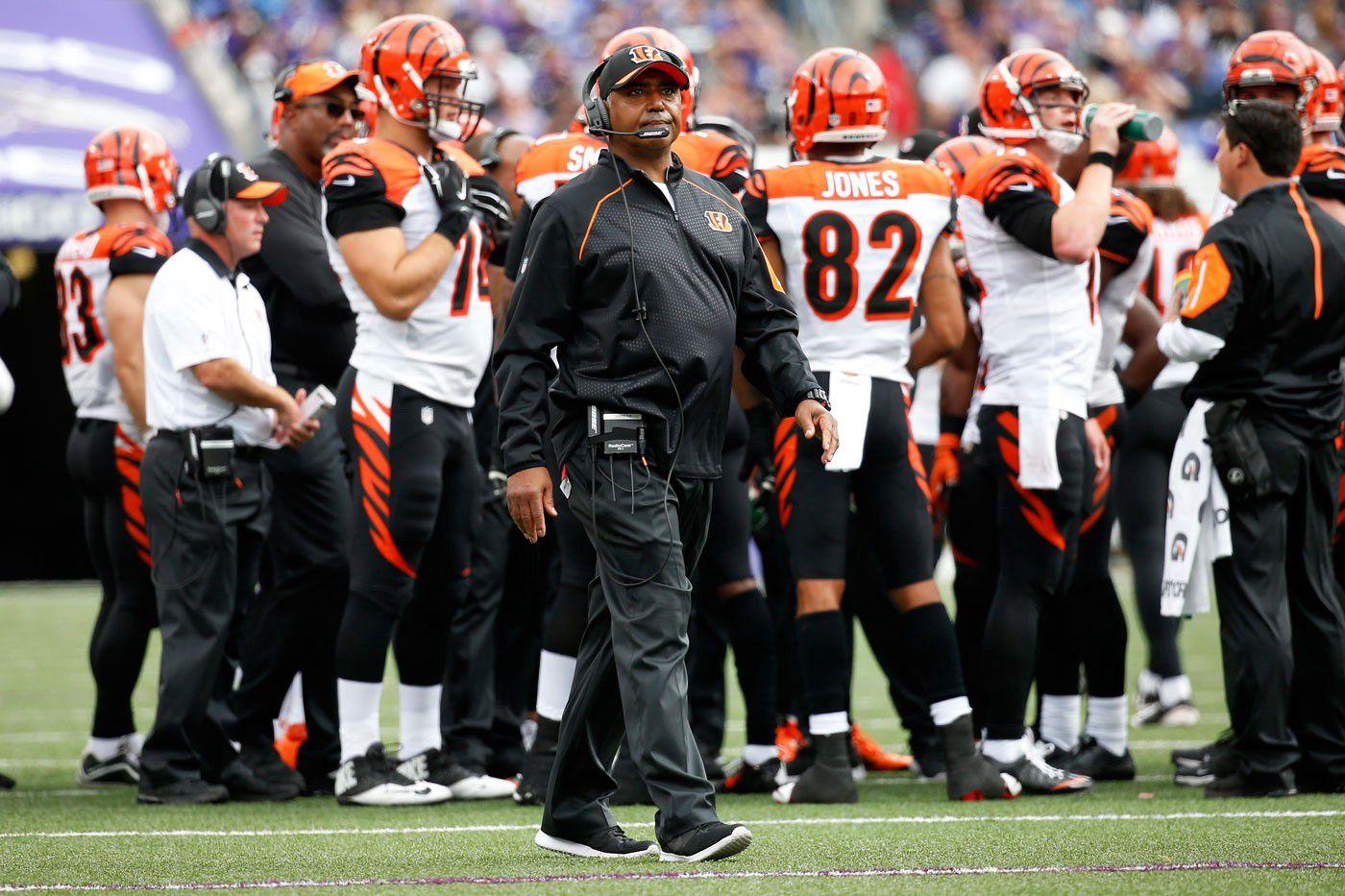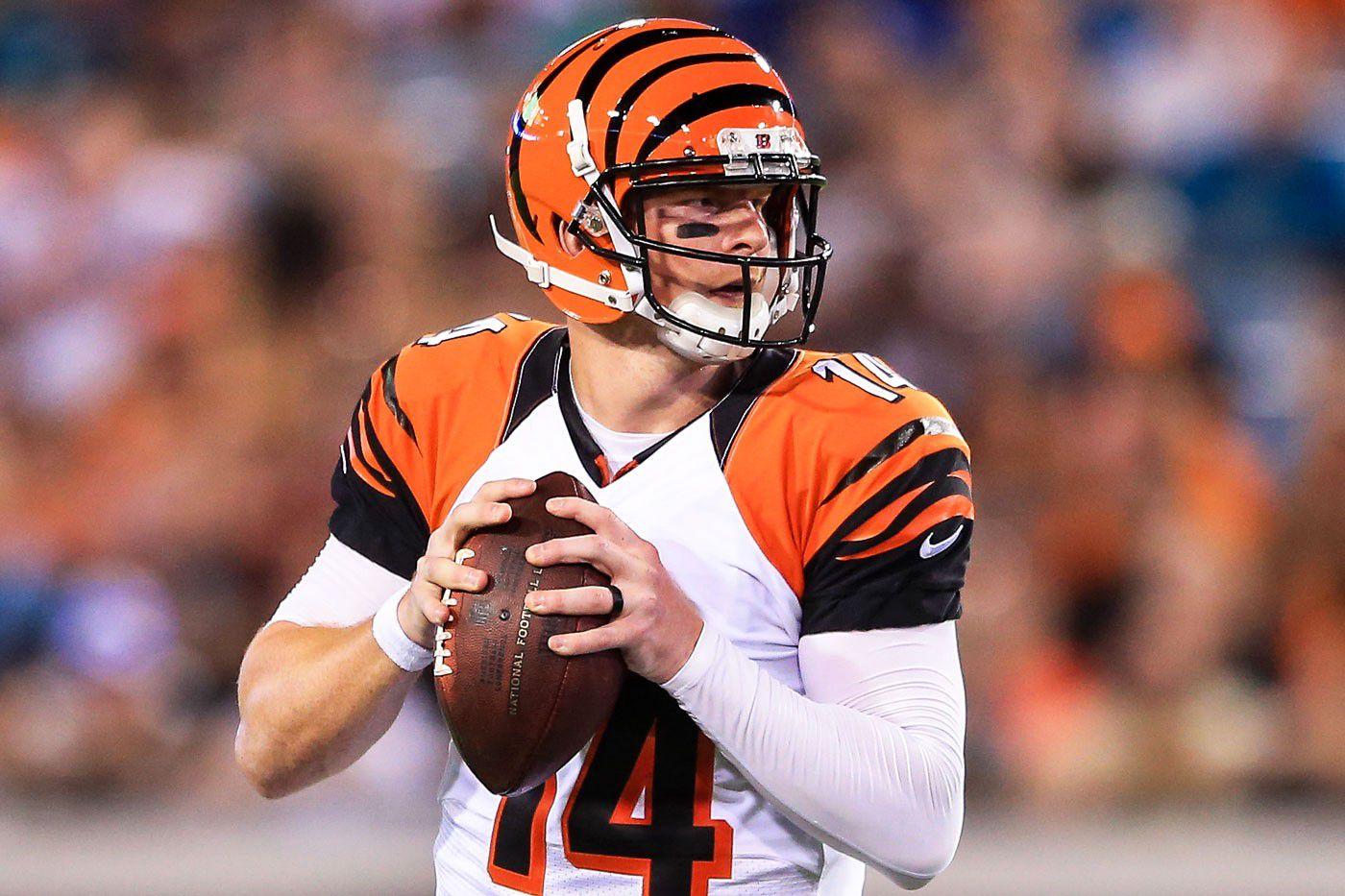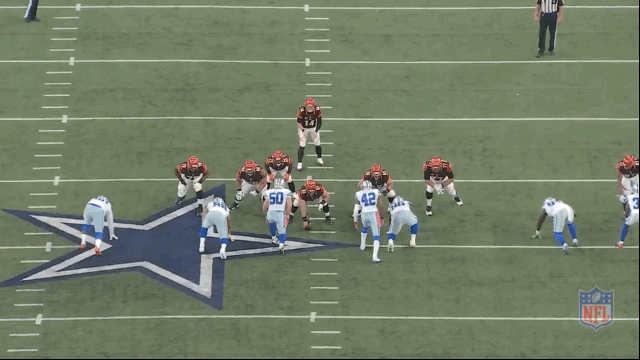
Expectations are everything, and for Marvin Lewis they’ve been recalibrated. Earlier this week, coming off a 28–14 loss to the Cowboys in which his team was blanked in the first half, Lewis referred to the issues plaguing the 2–3 Bengals as “fixable.” The use of that sort of rhetoric this early in the season is proof of the new reality in Cincinnati.
After going nearly a decade and a half without making a playoff appearance (1991 to 2004), the Bengals have been to the postseason in each of the past five years. With that type of success, the bar for Lewis and this franchise has changed. Lewis is in his 14th season as Cincy’s head coach, and during his tenure an organization that was once synonymous with dysfunction has emerged as a model of stability.
Each of those five trips to the playoffs — and all seven of Lewis’s trips overall — have resulted in a loss in the wild-card round. Yet that doesn’t take away from the notion that the Bengals have earned a spot alongside the best franchises in the NFL over the past half decade. After the team’s slowest start in years, though, the question is whether Cincinnati is finally stagnating under Lewis, or whether it can turn things around and make another run to the postseason.

It’s often noted that only Bill Belichick has been with his current team longer than Lewis has, but the latter’s time in Cincy can be split into two periods. The first spans from his hiring in 2003 to the Bengals’ winning the AFC North in 2009; Lewis went 56–55–1 over those seven seasons. The second period began when he entered the 2010 campaign as a lame duck of sorts. He and the Bengals had no contract in place for the following year, and the deal that the franchise had offered him remained unsigned deep into the season.
The Bengals were a disaster in 2010, finishing 4–12 and dropping 10 games in a row just one year after making the playoffs. Despite the stumble, owner Mike Brown and the organization reportedly wanted to keep Lewis. The issue was whether he wanted to stay.
At that point, the conditions for a head coach in Cincinnati had reached their nadir. Brown was the only NFL owner other than Dallas’s Jerry Jones who also served as his team’s general manager. The Bengals lacked an indoor practice facility. Their starting quarterback, Carson Palmer, made it clear that he’d rather retire than play another down for the Bengals. And about five months after the 2010 season ended, an ESPN project would deem the franchise the worst not only in the NFL, but in all of professional sports (based on factors such as coaching, ownership, playoff success, and a general disregard for fans’ well-being). Still, on January 4, 2011 — with a press conference that was apparently much chillier than the winter winds outside — Brown and Lewis shared the stage and announced that the two sides had agreed on an extension.
The subsequent offseason brought a slew of changes that would prove vital in establishing the version of the Bengals that we know now. In July, receiver Chad Johnson was traded to the Patriots. Rather than continue with Cincinnati after the team denied his request for a trade, Palmer announced his (temporary) retirement. And after a decade on the job, Bob Bratkowski was fired as the offensive coordinator.

To replace him, Cincy hired Jay Gruden. Considering the trajectory that Gruden’s career has taken since, the move makes perfect sense in retrospect, but at the time he was an Arena League coach whose sole NFL experience came as an offensive assistant under his brother, Jon, in Tampa Bay. It was a gamble, and representative of Lewis’s future success: His knack for assembling a staff (three of his coordinators have been hired as head coaches in the past three years), has been a key piece of the Bengals’ recent surge.
The franchise’s real transformation, though, happened during the 2011 draft — both in terms of the players the Bengals netted and the way those players were selected. With Johnson out of the mix, taking Georgia receiver A.J. Green with the no. 4 overall pick was almost a given. Yet when it came time for the Bengals’ second-round pick, both the player they selected and the conversation that surrounded him were an indication of things to come.
In need of a QB, Brown favored picking Nevada’s Colin Kaepernick. Gruden wanted to take TCU’s Andy Dalton. Eventually, Gruden got his wish. The personnel structure in Cincinnati has always been murky, but the understanding is that part of Lewis’s decision to return to the franchise that January included an agreement that he’d have greater say in shaping the roster (Lewis has downplayed this whenever he’s been asked). In the years since, Brown has made it clear that those decisions have “essentially been handed off” to a combination of Lewis’s staff and the personnel department, run by Duke Tobin. This spring, Tobin represented the franchise at a press conference at the combine.
Since 2011, Cincinnati has been among the best teams in the league at mining talent. Along with Green and Dalton, the Bengals’ 2011 draft also brought starting guard Clint Boling in the fourth round. In 2012, they landed cornerback Dre Kirkpatrick and guard Kevin Zeitler, both current starters, in the first round; wide receivers Mohamed Sanu (third round) and Marvin Jones (fifth), both of whom left as high-price free agents in 2016; and safety George Iloka (fifth), also a starter. 2012 was also the year that the franchise signed linebacker Vontaze Burfict as an undrafted free agent. For all the issues he’s had, there’s no denying that his production has far exceeded his price.
During the 2011 season, the Bengals made the first of their five straight playoff trips. Cincy has lost its first game in all five, and any criticism of Lewis typically is rooted in his postseason failings. But take a closer look at the past five years and it’s hard to place all the blame on the Bengals coach.
This team was favored in just one of those five games — a 27–10 clunker against the Chargers in January 2014 that included two Dalton interceptions — and for the past two seasons injuries have sabotaged teams that had legitimate Super Bowl hopes. The 26–10 egg the Bengals laid in Indianapolis in January 2015 looks horrible on paper, but they were without Green, Jones, and tight end Tyler Eifert; running back Gio Bernard, Sanu, and backup tight end Ryan Hewitt were the three most-targeted Bengals that day. And while last season’s loss to Pittsburgh will forever be remembered for Burfict’s horrendous fourth-quarter display, it’s worth noting that the Bengals were rolling with AJ McCarron at quarterback. That they were able to stick with the Steelers at all was impressive.
These may come off as excuses for Lewis, but at this point he shouldn’t need any. Before he arrived in Cincinnati, it had been 12 seasons since the Bengals had made the playoffs. Now, it’s been five since they haven’t. That’s a feat matched by only three other teams over that span: the Packers, Broncos, and Patriots. By 2011, each of those franchises had won at least two Super Bowls since the last time Cincinnati had even played in it.
In this second wave of Lewis’s stint, the Bengals have gone from being a punch line to a contender, year in and year out. They’ve limped out of the gate in 2016, though, and it’s left fans wondering if it’s a small dip or the start of a long fall.

The turnover Cincinnati experienced this offseason wasn’t anything close to what it experienced in 2011, but it was the most significant shift that’s happened since. The defense entered this fall without safety Reggie Nelson and cornerback Leon Hall (who, admittedly, had missed plenty of time due to injury) for the first time since 2010. Offensive coordinator Hue Jackson was hired away as the Browns head coach, leaving longtime quarterbacks coach Ken Zampese to call plays. Losing two coordinators before the 2014 season (Gruden was hired by Washington and defensive coordinator Mike Zimmer went to Minnesota) was a considerable blow, but in Jackson the Bengals had a former head coach who was more than comfortable handling play-calling duties. For Zampese, this is new territory.

The offensive personnel was also overhauled: 2015 first-round pick Cedric Ogbuehi replaced 2009 first-rounder Andre Smith at right tackle, and both non–A.J. Green starting receivers from last season (Jones and Sanu) were handed wheelbarrows full of cash by other teams in free agency. That left rookie Tyler Boyd and journeyman Brandon LaFell as Dalton’s remaining options on the outside.
All of those changes have played at least some role in the Bengals’ disappointing 2016 start. Last season, Cincinnati finished second in Football Outsiders’ offensive DVOA while averaging 26.2 points per game. With a healthy Dalton (who broke his thumb in a December 13 loss to the Steelers and then missed the remainder of the season), the Bengals were among the most dangerous units in football, and they got there by boasting a deadly combination of rushing and passing.
Through five games this season, the Bengals rank a “meh” 14th in offensive DVOA. Many people’s first reaction — as it tends to be with this team — is to fault Dalton; after enjoying a borderline MVP campaign, he has turned from a man resembling a pumpkin back into an actual pumpkin. But that couldn’t be further from the truth. Dalton’s raw totals have been excellent (only Matt Ryan has more passing yards), and what’s more impressive is how well he’s played in less-than-ideal conditions.
The central issue is the protection he’s gotten. Last season, no NFL quarterback was pressured less often than Dalton, according to Football Outsiders. The Bengals’ line was one of the league’s best, and Dalton did his part by finishing third among QBs in average time to throw (2.41 seconds, per Pro Football Focus). This fall, the protection hasn’t come close to that level. After being sacked 20 times all of last season, he’s been sacked 17 times in five 2016 games. Seven sacks by the Jets in Week 1 inflate that total, but even teams with more anemic pass rushes (Dallas) have found a way to get to Dalton.

Bengals center Russell Bodine has struggled at times this season (especially in Week 1 and when he was flattened by Cowboys defensive tackle Cedric Thornton on a sack last Sunday), and Ogbuehi — the lone new starter — has also had his rough moments. And the line’s issues go beyond that. It has failed to create a successful running game, which was a major factor in Cincinnati’s offensive potency in 2015. After the Bengals were seventh in rushing DVOA last season, they currently sit at 25th, with neither Bernard nor Jeremy Hill averaging more than 4 yards per carry. Cincy has tried to use creative methods to get the ground game going (motions, unbalanced lines, etc.), but nothing has seemed to work.
It also seems like the Bengals are desperately missing Eifert, who had surgery on his ankle in May and hurt his back in October. Among players with at least 10 red zone targets last season, no one caught a higher percentage than Eifert (80). He finished with 11 red zone touchdowns, second in the league, and was clearly this offense’s top threat near the goal line. Without him, the Bengals have been hapless in that area of the field. Only three quarterbacks with at least eight pass attempts inside the opposing 10-yard line have a worse completion percentage than Dalton’s 37.5. After finishing third in touchdowns per red zone drive last season, the Bengals are 29th so far in 2016. Cincinnati is still managing 34.6 yards per drive, seventh best in football, but its inability to come away with touchdowns has doomed the offense through five games.
The good news for the Bengals is that all of these issues do seem fixable. Eifert’s return is imminent (even if it doesn’t happen this Sunday against the Patriots); the line will probably improve as the starters spend more time together; and Burfict is back on the field after serving his three-game suspension, meaning it’s likely that the Cincinnati run defense will have much better showings than it has so far. Three losses put the Bengals in a hole as they chase the Steelers in the AFC North and teams like the Raiders in the wild-card hunt, but it doesn’t mean the franchise is reverting to where it was before 2011.
Even if this does become the season when the Bengals miss the playoffs for the first time since Dalton was drafted, it’s worth considering just how much has changed before the calls for Lewis’s job begin. The Bengals are supposed to make the playoffs now. Those sort of expectations are the mark of a franchise with the right pieces in place.